
- Home
- Photography Tours
- Diary / Blog
- Galleries
- Foreign Trips
- Tasmania 2016
- NE Queensland 2016
- Western Alps 2016
- NE Spain 2016
- Australia's Wet Tropics 2015
- Australia's Top End 2015
- SW Australia 2015
- Switzerland 2015
- Andalucia 2015
- Belize 2015
- Australia 2014
- Switzerland 2014
- Belize 2014
- Bahama Islands 2014
- Switzerland 2013
- Ecuador 2012-2013
- Florida 2011-2012
- Vancouver Island 2011
- Australia 2010
- Peru 2008
- Bulgaria 2007
- Lesvos 2006
- California 2006
- New Zealand 2005
- Extremadura 2005
- Goa, India 2004
- The Gambia 2003
- About
Western Alps
June/July 2016
Part 4 : Butterflies
Fritillaries (Nymphalidae: Nymphalinae)
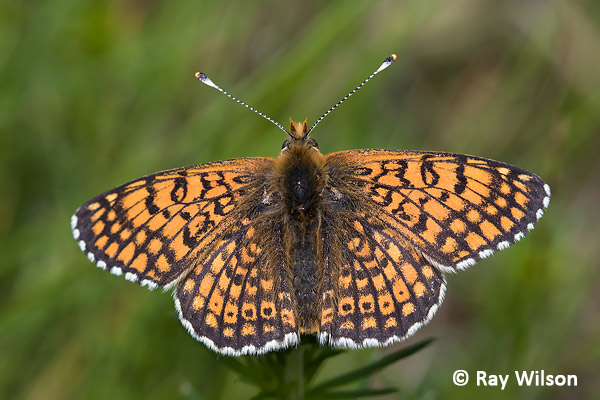
Glanville Fritillary (Melitaea cinxia)
There are about 25 species of orange-and-black fritillaries that occur in the western Alps. Most are pretty similar to each other so they represent a bit of an identification headache if you are not familiar with them.
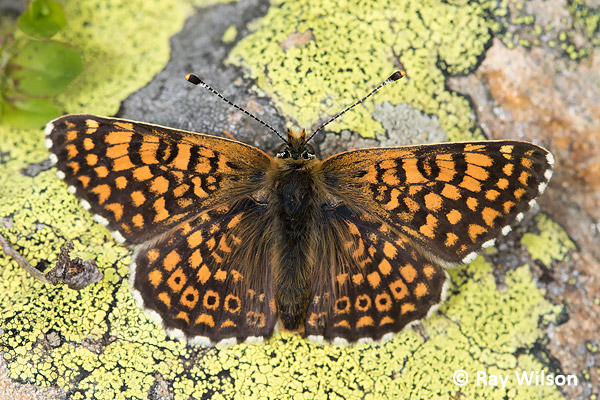
Glanville Fritillary (Melitaea cinxia)
In the early part of the trip, Glanville Fritillary was by far the commonest species of fritillary encountered. They are easily distinguished from other fritillaries with orange-and-black checkered upperwings by the the row of square-shaped spots inside the orange lunules on the hindwing.
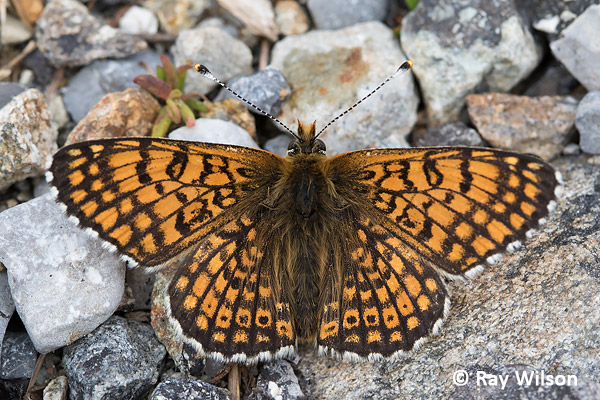
Glanville Fritillary (Melitaea cinxia)
The only species that shares this feature is the Marsh Fritillary, but confusion between these two is unlikely. Marsh tends to be a lot less uniform in its orange ground colour and often has bands of contrasting yellowish lunules and lacks the strongly checkered edging to both the fore and hind wings.
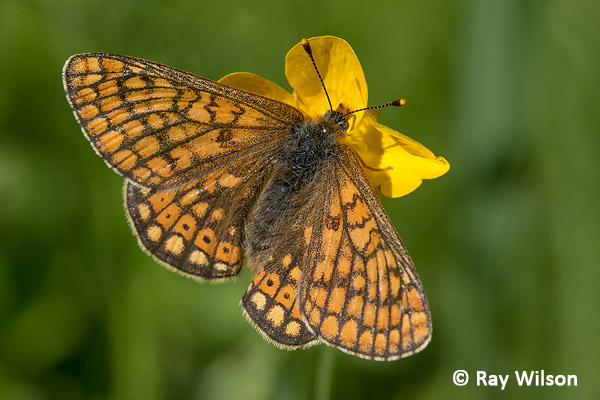
Marsh Fritillary (Euphydryas aurinia)
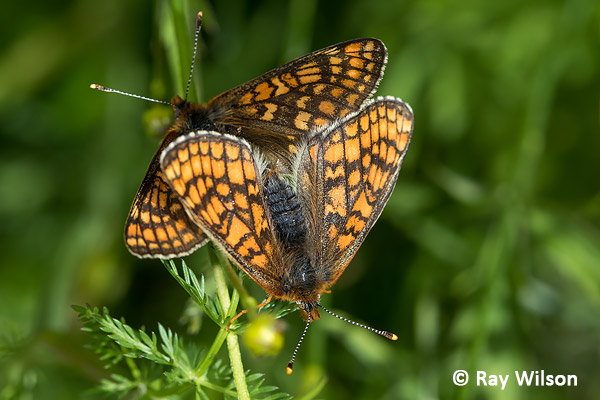
copulating Marsh Fritillaries (Euphydryas aurinia)
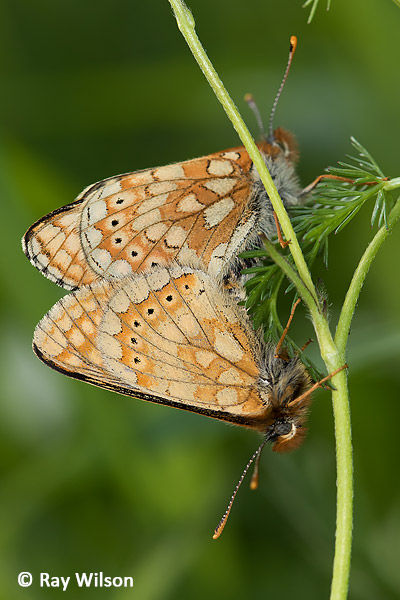
copulating Marsh Fritillaries (Euphydryas aurinia)
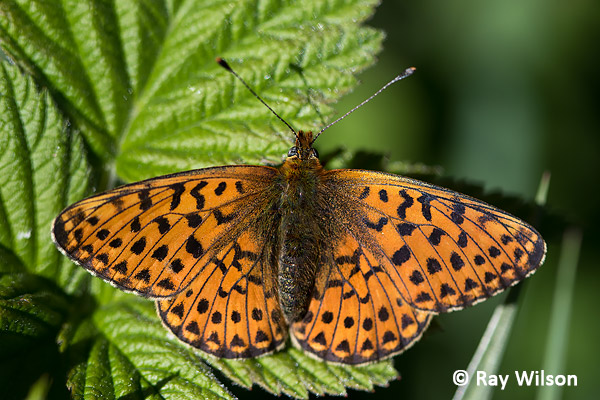
Pearl-bordered Fritillary (Boloria euphrosyne)
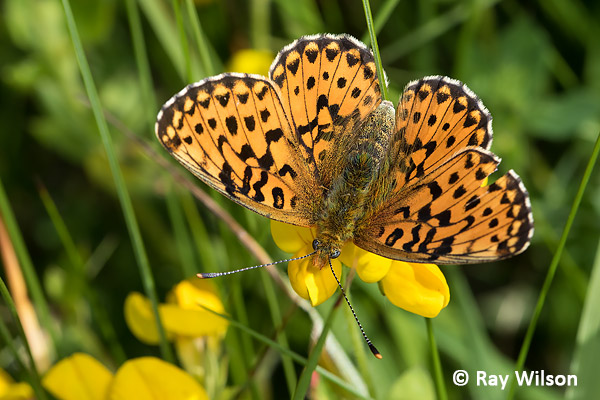
Pearl-bordered Fritillary (Boloria euphrosyne)
The single large white spot in the central yellow band on the underside of the hindwing identifies the individual shown below as B. euphrosyne. The very similar B. selene has several white spots in this band.
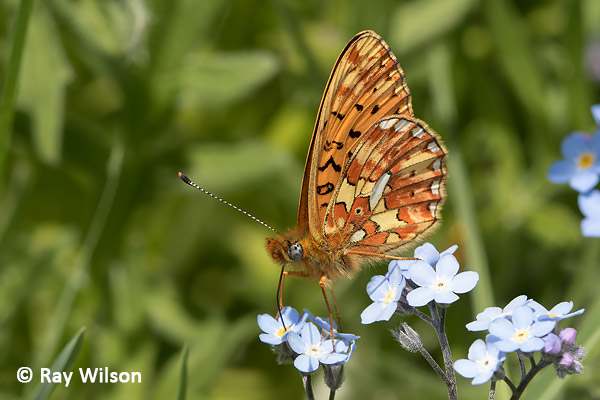
Pearl-bordered Fritillary (Boloria euphrosyne)
The dark hindwing dotted with small orange spots renders the False Heath Fritillary one of the most distinctive, and easiest to identify, alpine fritillaries.
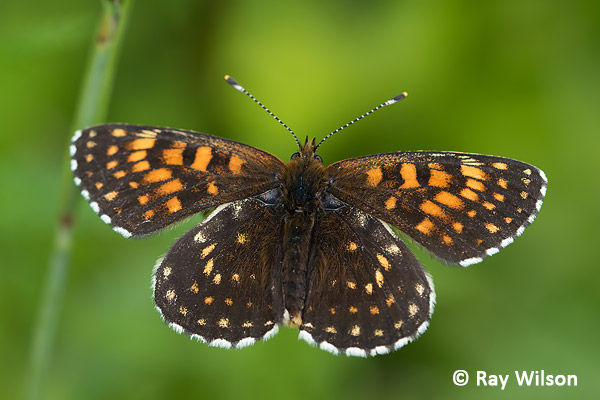
False Heath Fritillary (Melitaea diamina)
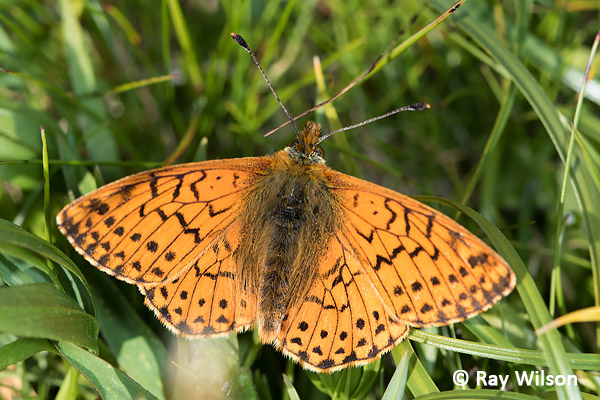
Shepherd's Fritillary (Boloria pales)
Male Shepherd's and Mountain Fritillaries are very similar in their upperwing markings, with the main difference between the two being that the first row of post-discal spots are macular (comprised of separate triangular spots) in Shepherd's Fritillary but "linear" (the triangular spots touching to form a continuous line) in Mountain Fritillary.
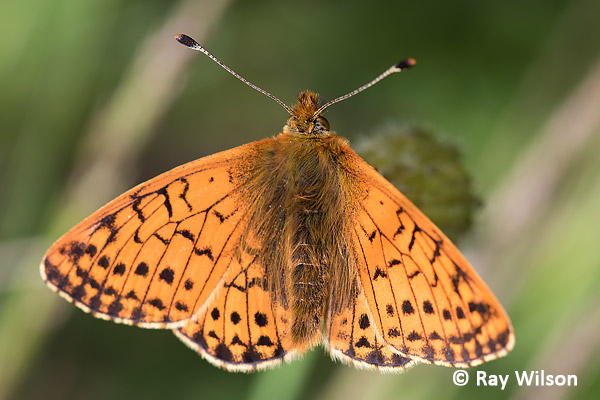
Mountain Fritillary (Boloria napaea)
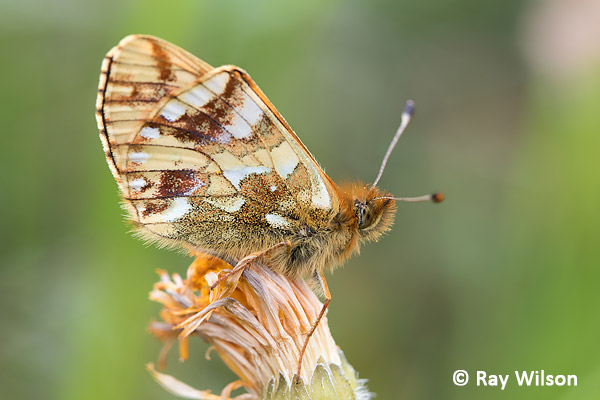
Mountain Fritillary (Boloria napaea)
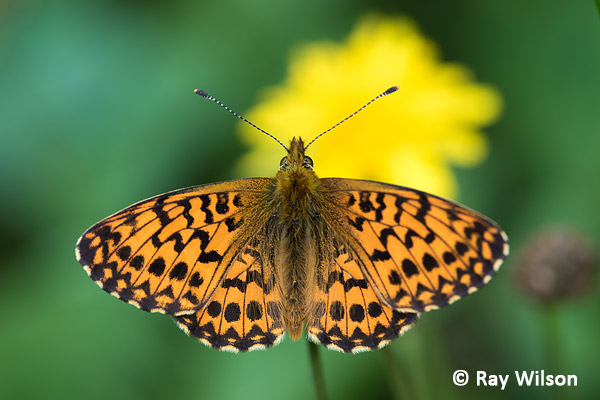
Titania's Fritillary (Clossiana titania)
It is not obvious from photographs, but both Titania's Fritillary and Dark Green Fritillary are noticeably larger in size than all the preceding species.
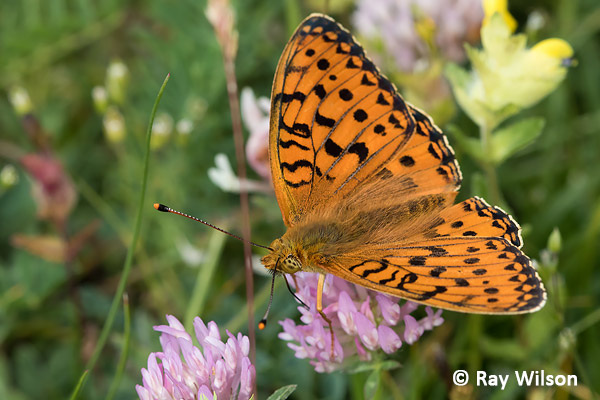
Dark Green Fritillary (Argynnis aglaja)
High Brown Fritillary is similar in size to Dark Green Fritilly but can be distinguished by its straight, slightly concave, edge to the outer margin of the forewing.
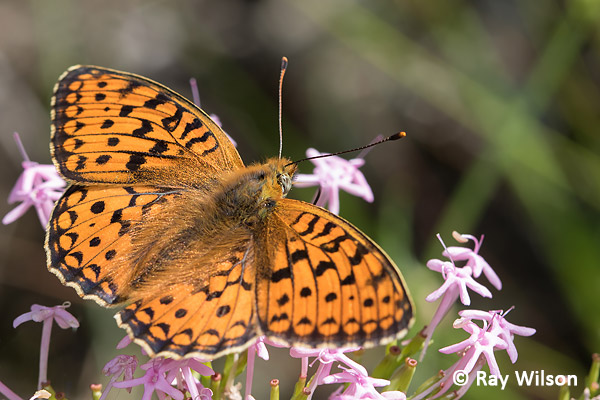
High Brown Fritillary (Argynnis adippe)
Weaver's Fritillary is widespread and locally common throughout most of southern and central Europe where it can be found in grassy meadows and woodland clearings up to an altitude of around 1600m.
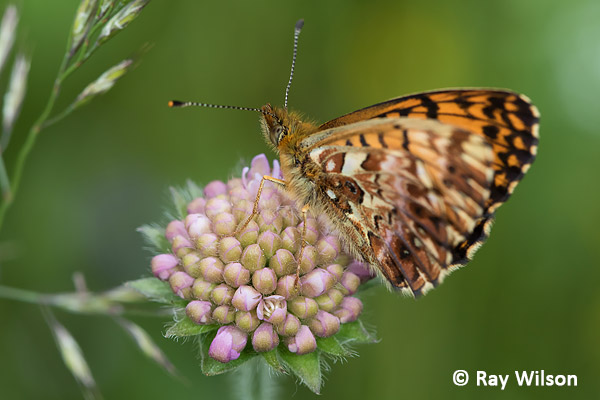
Weaver's Fritillary (Boloria dia)
Spotted Fritillary is common from sea-level to the high mountains, but requires sun, flowers and open dry areas to thrive.
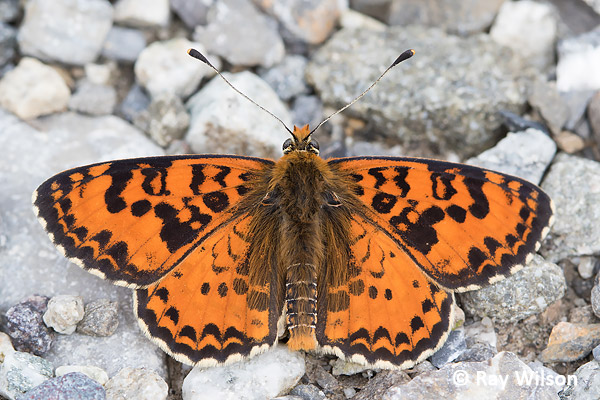
Spotted Fritillary (Melitaea didyma)
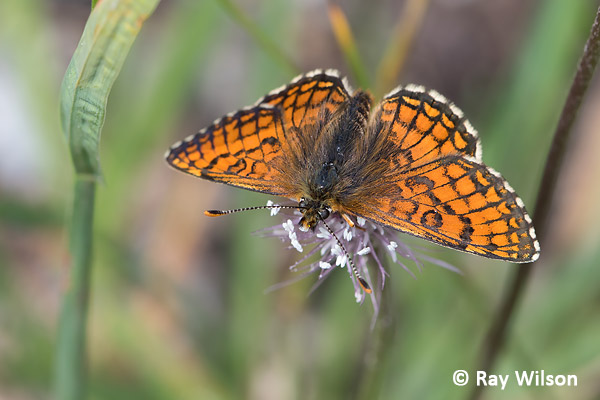
Meadow Fritillary (Melitaea parthenoides)
Meadow Fritillary and Knapweed Fritillary are both common in SW Europe.
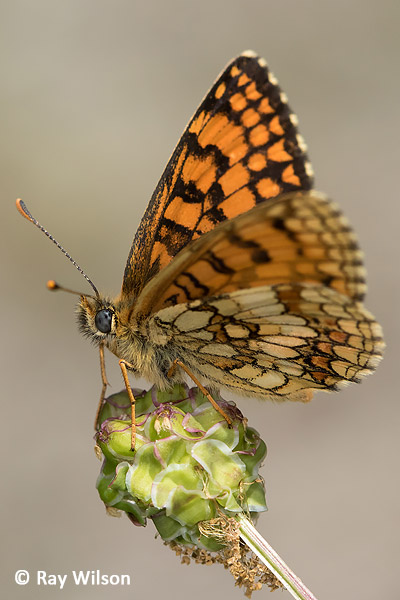
Knapweed Fritillary (Melitaea phoebe)
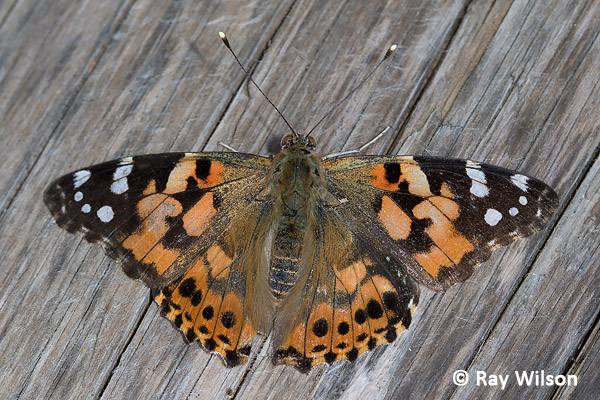
Painted Lady (Canessa cardui)
Ray Wilson owns the copyright of all images on this site.
They may not be used or copied in any form without prior written permission.
raywilsonphotography@googlemail.com